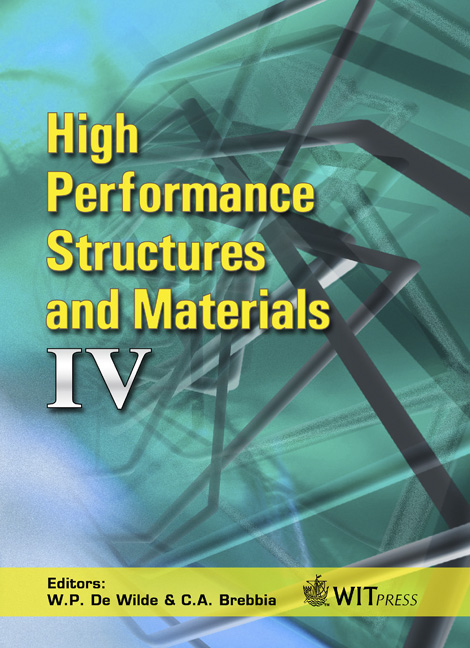Viscoelastic Modelling Of Regular Cross-ply Polymer-matrix Laminates
Price
Free (open access)
Transaction
Volume
97
Pages
10
Page Range
13 - 22
Published
2008
Size
2,142 kb
Paper DOI
10.2495/HPSM080021
Copyright
WIT Press
Author(s)
M. Klasztorny, T. Niezgoda & R. Gieleta
Abstract
Recent rheological experiments performed on cross-ply laminates have pointed out that polymer-matrix laminates may exhibit valuable creep shear strains. So far, a problem of viscoelastic modelling has been developed only for UD xFRP composites, i.e. thermosets reinforced with long fibres aligned unidirectionally. In the modelling, the most advanced rheological model of thermosets, denoted with the symbol HWKK/H, has been employed. This model is capable of modelling short-, moderate- and long-term rheological processes. In this study, the analytical approach developed for UD xFRP composites has been extended on a regular cross-ply polymer-matrix laminate, denoted with the symbol CP xFRP, of the [0/90]nS, 4 ≥ n plies’ configuration. The plies, made of a specified woven fabric, are repeatable with respect to their thickness and microstructure. On the micromechanics level, each ply is modelled as a linearly viscoelastic monotropic continuum with the monotropy axis coinciding the direction of fibres’ alignment. A regular CP xFRP laminate is modelled as a homogeneous orthotropic continuum. Standard and inverse viscoelasticity equations of an orthotropic solid body modelling a homogenized CP xFRP laminate are formulated and analytic algorithms for determination of elasticity and viscoelasticity constants are developed. The calculation algorithms have been computerized and used to calculate the viscoelasticity coefficients of the specified CP CFRP laminate. Keywords: cross-ply polymer-matrix laminates, linear viscoelasticity, standard constitutive equations, inverse constitutive equations, long-term creep coefficients, long-term relaxation coefficients, elastic–viscoelastic analogy principle.
Keywords
cross-ply polymer-matrix laminates, linear viscoelasticity, standard constitutive equations, inverse constitutive equations, long-term creep coefficients, long-term relaxation coefficients, elastic–viscoelastic analogy principle.





